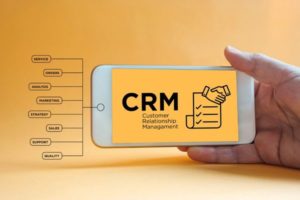Customer Relationship Software (CRM) helps a company organize and keep track of its customers and leads. It’s a cloud-based software that allows all of your employees access at all times from anywhere. This accessibility comes in very handy when providing timely customer service to existing customers or when trying to close a deal on a new one. In addition, when you have all of your company’s information in one place, you can effectively blend your marketing and sales efforts and track how well it is going in real-time.
There are three main types of CRM software available, and you need to decide which is best for your company’s needs.
The First Type of CRM Software is Collaborative
Also known as Strategic CRM, Collaborative software makes all internal communications between departments more fluid and accessible. It also allows you to communicate externally with your customers, increasing retention and loyalty.
This style of CRM has two essential parts: interaction management and channel management.
Interaction Management
Simply put, this focuses on all interactions between you and your customers. All this information is logged in and can be made available to whomever you want within the company.
Channel Management
This allows you to track and log all the ways and channels your customers use to get in touch with you. So, if you see that one of your customers always reaches out to you via email, you realize that is their preferred form of communication and how you should reach out to them.
The Second Type of CRM Software is Analytical
The benefit of using analytical CRM is to assist you in improving the customer experience by leveraging customer data into your strategies. You can then track customers’ channels and touchpoints and combine them with forecasting and trends. This will generate detailed reports that can tell you how your customer service is being received or provide information to formulate sales forecasts.
There are three main components of an analytical CRM.
Data Warehouse
This is a database that collects, integrates, and prepares customer data from various sources.
Data Mining
Looks for patterns in data that can be taken and used to help interpret trends and your customer’s interests.
Online Analytical Procedure (OLAP) Tools
This component allows you to analyze complex data interactively from multiple sources simultaneously.
The Third Type of CRM Software is Operational
Operational CRM allows sales and marketing to reach out to clients in real-time and streamline their interactions. Thus, assisting with generating leads to turn into new contacts and customers. The primary objective is to automate as many daily marketing, sales, and customer-based needs as possible to enhance overall customer satisfaction.
With all this data collected, every department gains access to your customer’s sales and marketing campaigns performance in usable, easy-to-follow reports.
Which Should I Choose for My Company?
There are many things to consider when choosing what CRM to use. Start by identifying your company’s needs, challenges, and goals. Then, look into what brands offer the best options and pricing. SharpSpring and HubSpot provide a complete marketing automation system with built-in CRM applications.
Contact Fat Guy Media if your business needs to develop and implement a CRM.


